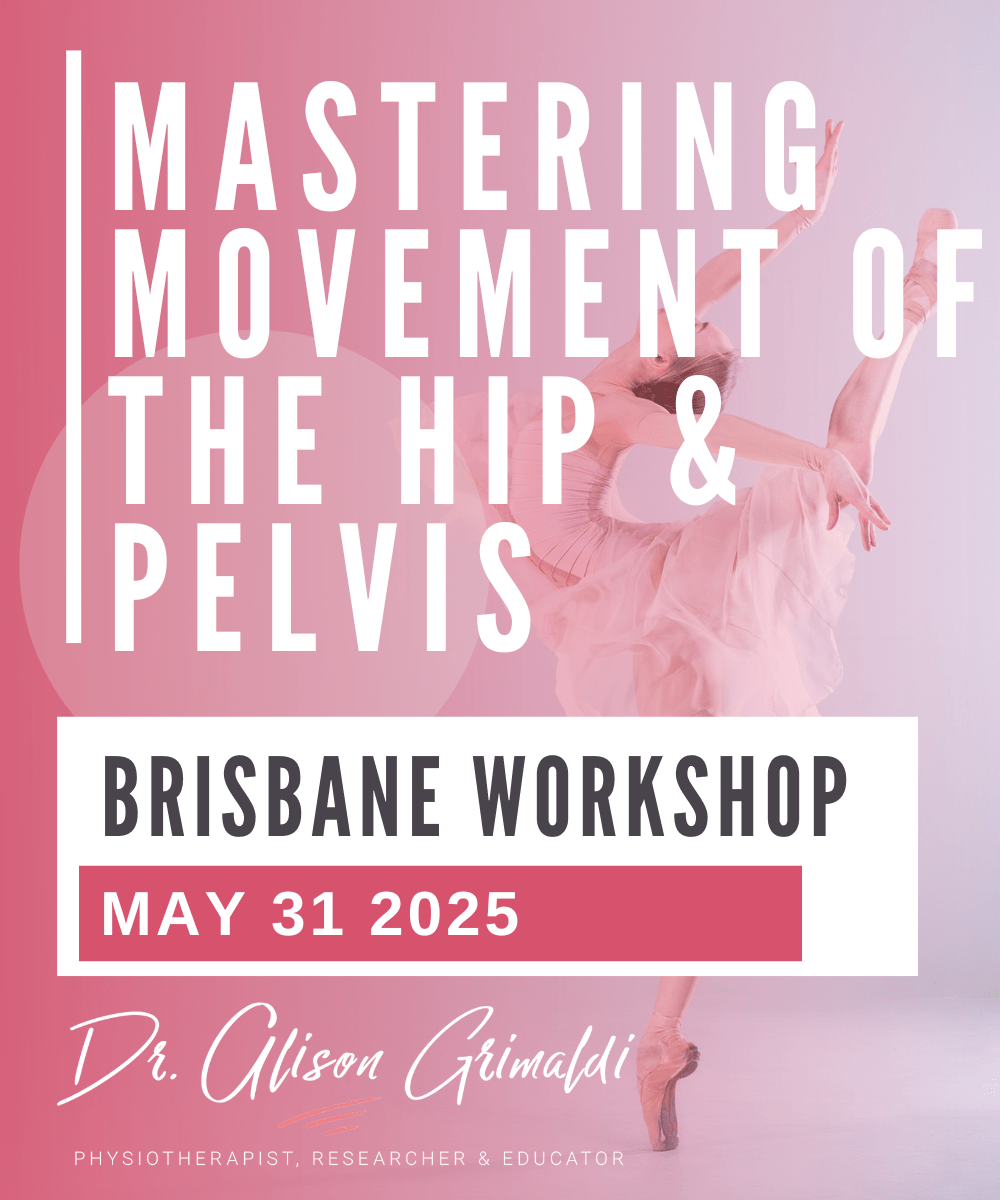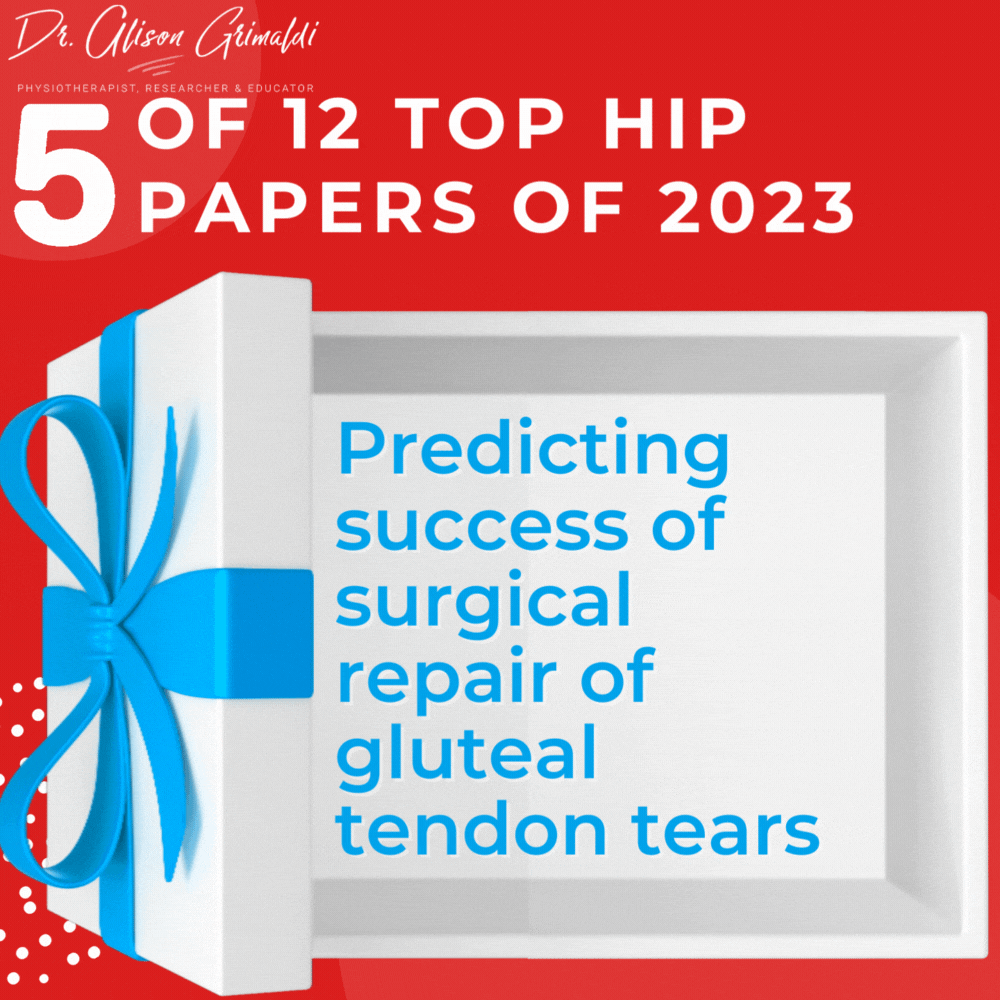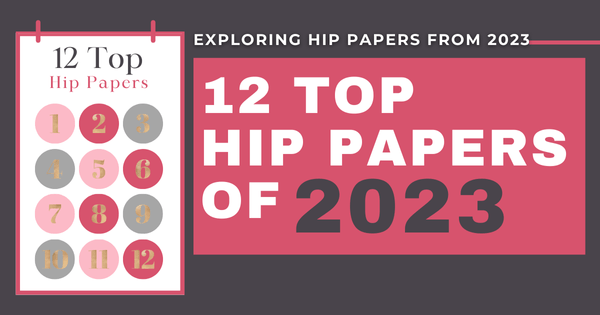4 of 12 Top Hip Papers of 2023 | Gluteal muscle forces during hip exercises

Welcome back for day 4 of my 12 Top Hip Papers series of miniblogs from 2023. If you missed Day 3, you'll find a link at the bottom of this page to take you back. The featured paper for day 4 provides important new evidence to consider in selecting gluteal exercises for hip rehabilitation. (Hint: you shouldn't be relying on EMG papers!) Great work from this team! Read more below with key findings of this paper and the clinical implications.

For your convenience, we have also developed this content into a FREE 31-page full colour ebook!
Packed full of 12 Top Hip Papers - peer reviewed scientific papers from 2023, that have contributed to our understanding of hip conditions and/or the assessment or management of hip pain or injury.

4 of 12 Top Hip Papers of 2023: Gluteal muscle forces during hip-focused injury prevention and rehabilitation exercises1
For a long time ... maybe decades ... there has been this endemic belief that exercises with the highest activation on electromyography (EMG) are the best exercises to prescribe in hip (and other) rehabilitation. This has been mainly driven by research papers making recommendations based on EMG levels. Without any other evidence to the contrary, many clinicians have happily chosen exercises based on these EMG focused recommendations.
There has been evidence available to make us question these assumptions and recommendations e.g., activation levels are poorly correlated with torque, high EMG may simply be due to a very inefficient length-tension relationships, and those with pain often function with high muscle activity levels and excessive co-contraction.
Finally, this research team has approached the issue from another, arguably more robust dimension - estimating gluteal force production in various hip-focused exercises. To improve a muscle's ability to generate and tolerate force, it makes sense that we will want to select exercises that expose the muscle to higher forces, in more optimal length-tension relationships. Let's see what this team did and found.
Study Aim:
This study aimed to:
- 'compare and rank gluteal muscle forces (gluteus maximus, medius, and minimus) in eight hip-focused exercises,
- determine the effect of adding 12 Repetition Maximum (RM) resistances on gluteal muscle forces, and
- describe the main differences in muscle fiber lengths, velocities, and activations between hip-focused exercises.'1
What was done:
- Biomechanical, force plate and EMG data from 14 female footballers (18-32yrs) was collected during 8 common hip exercises.
- This data was used within an EMG-informed neuromusculoskeletal model to estimate gluteus maximus, medius and minimus muscle forces.
- Forces were compared and exercises ranked in tiers.
What was measured:
Data Used
- 3D motion capture
- Ground reaction forces from 2 force plates
- Surface EMG from 12 lower limb muscles - gluteus medius, upper gluteus maximus, tensor fascia lata, rectus femoris, vastus lateralis and medialis, semitendinosis and biceps femoris long head, tibialis anterior, gastrocnemius (medial and lateral heads) and soleus.
Exercises (+ & - 12 RM resistance)
- Single-leg squat
- Split squat
- Single-leg Romanian deadlift (RDL)
- Single-leg hip thrust
- Banded side step
- Hip hike
- Side plank
- Side-lying leg raise
Analyses:
- Analysis of muscle forces for gluteus maximus, medius and minimus, normalised to each muscle's maximal voluntary isometric contraction.
- Exercises were ranked from highest to lowest based on peak mean muscle force and divided into 4 tiers.
Key Findings:
- Exercises that created highest gluteal muscle forces included:
- 12 RM split squat, single leg romanian deadlift (hip hinge) and single leg hip thrust for gluteus maximus.
- Side plank and 12RM single leg squat and single leg romanian deadlift (hip hinge) for gluteus medius.
- Side plank and 12RM single leg romanian deadlift (hip hinge) for gluteus minimus.
- Sidelying leg raises - bodyweight and 12 RM versions, were ranked in Tier 3 or 4 (lowest force) for all gluteal muscles.
- Body weight single leg squat had higher peak gluteus medius force than 12RM resisted sidelying leg raises.
- Peak gluteal muscles forces generally occurred with external resistance, at greater length, low velocity & near average muscle activation (EMG).
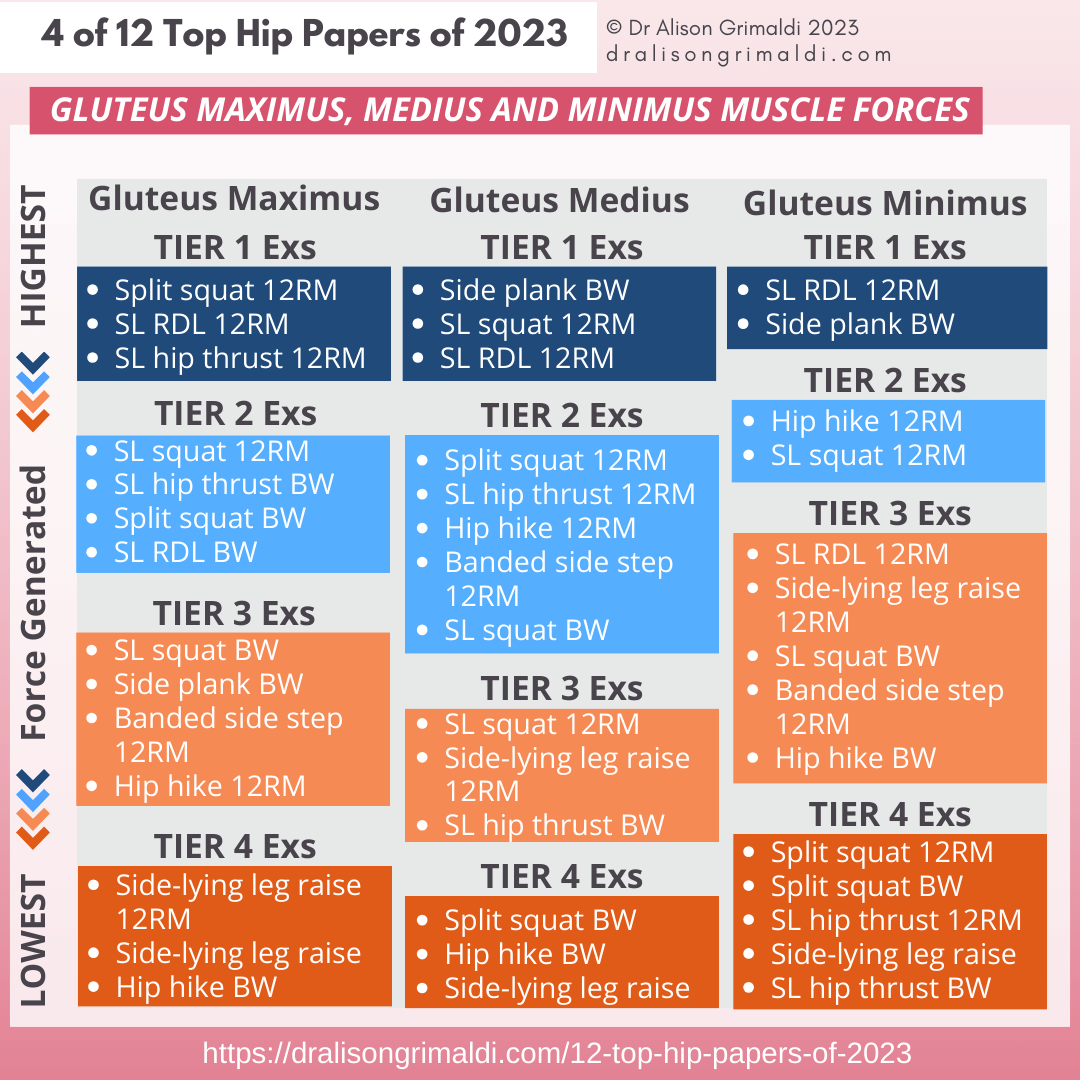
Gluteal muscle exercises ranked from highest to lowest mean peak muscle force.
Tier 1 = highest force, Tier 4 = lowest force. Exercises in Tier 1 and 2 have greatest potential capacity to induce strength gains and hypertrophy.
Clinical Implications:
This study provides guidance on selection of gluteal muscle exercises in rehabilitation.
Important take aways:
- Greater gains in muscle strength and bulk are achieved by training that involves greater muscle forces.
- Exercise selection often relies on EMG studies, BUT EMG does not provide an accurate indication of muscle force.
- Open chain hip abduction, even with 12RM resistance, is a low value exercise.
- These closed chain exercises generate higher muscle forces and are likely to be more useful in improving gluteal muscle strength and bulk.
- Starting with bodyweight versions of these closed chain exercises and gradually adding external resistance will provide a graduated training load in rehabilitative programs.
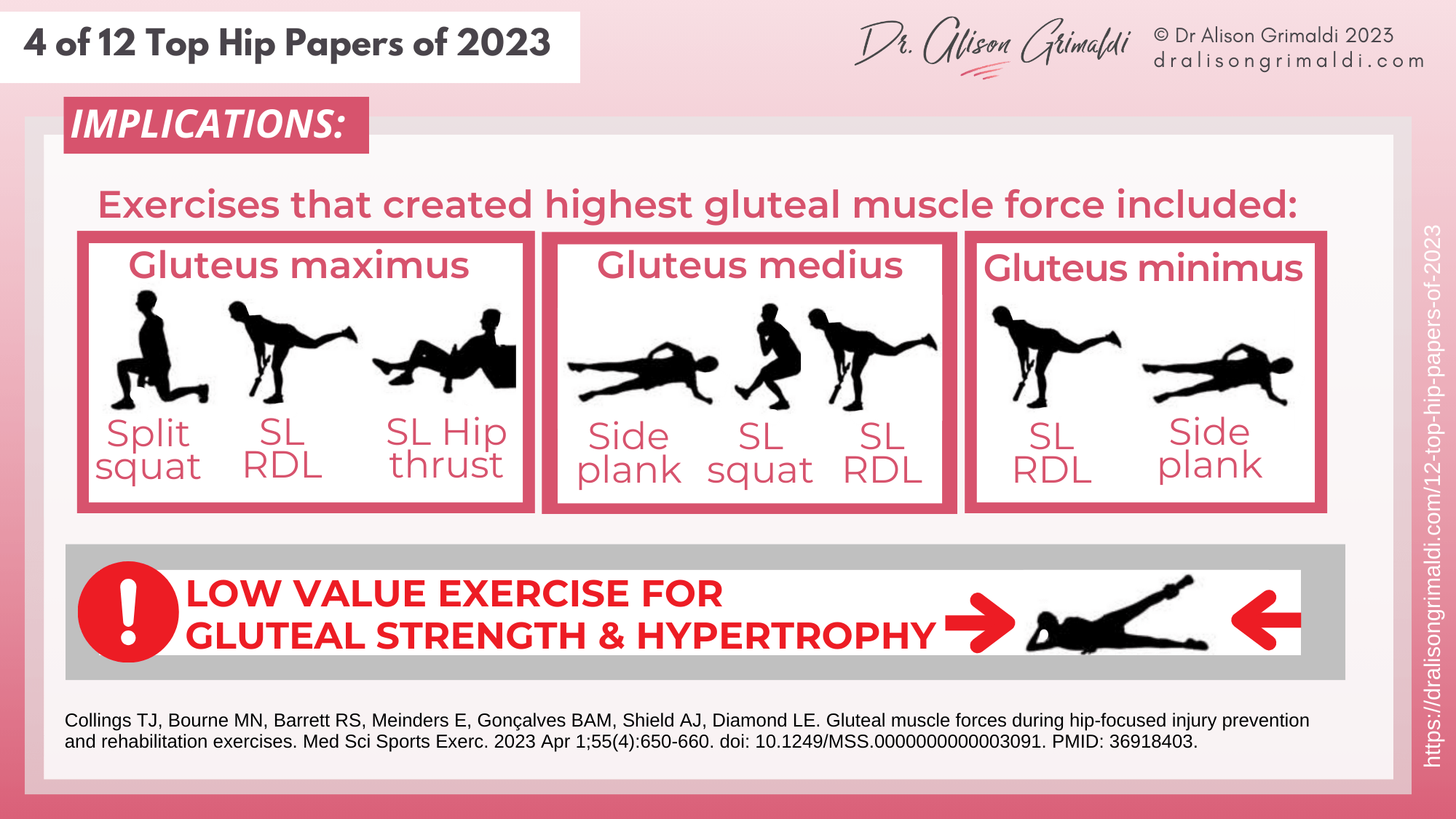
Further research is now required to demonstrate that these exercises generating higher forces are more effective at improving gluteal muscle strength and/or size. There is no evidence that high EMG exercises produce such outcomes. Now at least we have some further high-quality evidence on which to base our decisions.
Let's not rely on EMG studies when we select exercises. Consider this valuable information on muscles forces and get people on their feet doing weightbearing exercise and add in some sideplank where it's appropriate for the individual.
Secure your spot for my upcoming Mastering Movement of the Hip & Pelvis Practical Brisbane Workshop!!!
AUD $500
Can't make the workshop? Do the Online Course
This online course is included in Hip Academy and Hip Academy members receive discounts for online workshops.
I hope you enjoyed the infographics and key learnings from Day 4 of my 12 Top Hip Papers of 2023. There are 8 more papers in this series, so use the navigational graphics below, to see what other top papers and infographics I have for you!
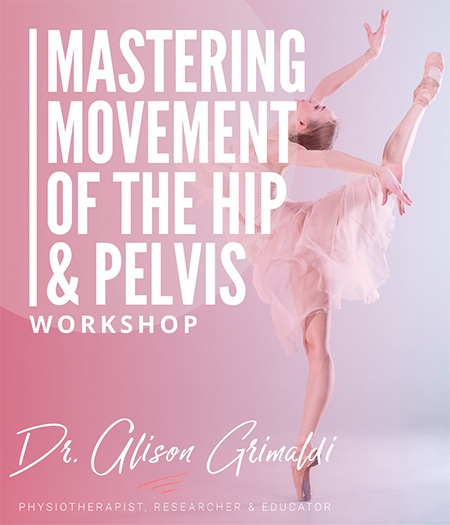
Like to learn more about assessing and prescribing exercises for the gluteals?
In this course, you can find information on hip muscle function and dysfunction, with implications for assessment and therapeutic exercise prescription. To learn more, take the Online course, or join me in the Mastering Movement of the Hip & Pelvis Workshop.

